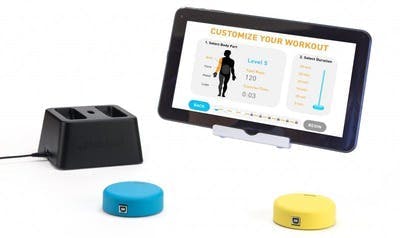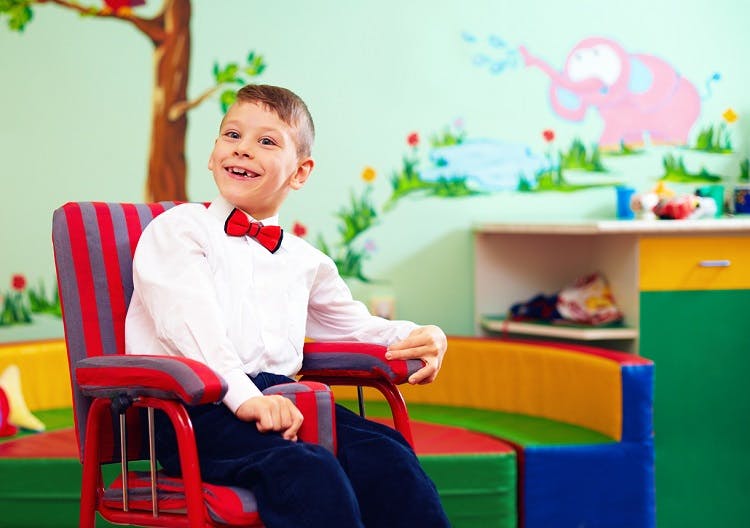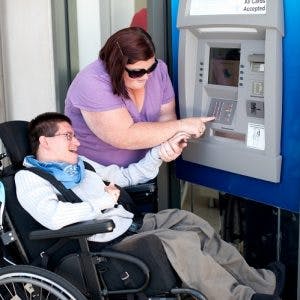Mixed cerebral palsy occurs when an individual experiences the effects of multiple types of cerebral palsy. For example, one type of CP may affect movement patterns while another mostly affects fine-motor coordination. If you have mixed CP, you may experience both of these effects.
Fortunately, many individuals with mixed cerebral palsy learn how to effectively manage their motor impairments, be functional, and maintain a high quality of life.
To help you understand what mixed cerebral palsy is, this article will discuss its:
Causes of Mixed Cerebral Palsy
Mixed cerebral palsy is caused by damage to multiple areas of the brain. It can occur due to any combination of damage to the developing motor cortex, basal ganglia, thalamus, and cerebellum.
Individuals with mixed CP usually experience the effects of two different types of cerebral palsy. However, it’s also possible (although much rarer) to experience the effects of all three.
CP is the result of damage to the developing brain before, during, or shortly after birth. Therefore, common causes of mixed cerebral palsy include:
- Premature birth
- Multiple-birth pregnancy
- Hypoxia (lack of oxygen in the brain)
- Maternal infections
- Infant infections
- Traumatic brain injury
- Stroke
- Genetic factors
Now that you understand why individuals have mixed cerebral palsy, let’s take a close look at the major differences between the 3 types of CP that may be present in an individual with mixed CP.
Symptoms of Mixed Cerebral Palsy
There are three primary types of cerebral palsy: spastic, dyskinetic, and ataxic. Individuals with mixed cerebral palsy demonstrate characteristics associated with at least 2 types. The most prevalent combination is spastic-dyskinetic.
Below, we’ll discuss the defining characteristics of each type of cerebral palsy.
Spastic Cerebral Palsy
Spastic cerebral palsy is the most common type of cerebral palsy, making up about 80% of all cases. It’s caused by damage to the motor cortex, the part of the brain responsible for controlling and planning voluntary movements. Depending on the severity of the damage to the motor cortex, spastic cerebral palsy can affect one limb, one side of the body, primarily the legs, or the whole body (potentially including the face).
Spastic cerebral palsy is characterized by spasticity, which refers to high muscle tone caused by disrupted signals from the damaged brain. Spasticity typically results in stiff or exaggerated movements. However, if not properly managed, it can lead to negative long-term consequences such as pain, poor posture, contractures, and non-ambulation (inability to walk).
Dyskinetic Cerebral Palsy
Dyskinetic cerebral palsy occurs in up to 15% of all cerebral palsy cases, making it the second most diagnosed type of cerebral palsy. It’s caused by damage to the basal ganglia and/or thalamus and is primarily characterized by uncontrollable movements.
There are two main types of disordered movement patterns individuals with dyskinetic cerebral palsy may experience: athetosis and dystonia.
Athetosis describes uncontrollable fluctuations in muscle tone. The muscles fluctuate between being flaccid and spastic, which results in the appearance of continuous movement. In contrast, dystonia describes muscle contractions that cause repetitive, twisting movements.
Ataxic Cerebral Palsy
Ataxic cerebral palsy is the least common type of cerebral palsy. It’s a result of damage to the cerebellum, which is responsible for regulating balance, coordination, and fine motor skills. Individuals with this type of CP may walk with a wide-based stance or struggle with tasks that require precision.
In the following section, we’ll discuss how individuals with mixed CP can manage their motor impairments.
Management of Mixed Cerebral Palsy

Because every case of mixed cerebral palsy is unique, ideal management interventions will vary from person to person. By working with a team of medical professionals and rehabilitation specialists, individuals can identify their specific strengths and weaknesses and learn how to appropriately optimize their strengths and manage their challenges.
Commonly utilized management interventions for mixed cerebral palsy include:
- Physical therapy helps individuals improve their motor functions through targeted exercises. Physical therapists may focus on lengthening tight muscles to increase range of motion and strengthening underused muscles to improve motor control.
- Occupational therapy helps individuals improve their independence by practicing new ways to perform daily activities. It may also involve learning how to use adaptive devices.
- Speech therapy helps individuals with oral motor impairments improve their ability to chew, swallow, and speak. A speech-language pathologist may also teach individuals with more severe forms of oral motor impairments how to utilize augmentative and alternative communication methods.
- Orthotic devices like braces, casts, and splints provide musculoskeletal support. Individuals with mixed cerebral palsy may experience a combination of both high and low muscle tone, which can significantly affect posture and cause disproportionate growth.
- Feeding tubes may ensure that individuals with oral motor impairments meet their nutritional needs.
- Baclofen is a muscle relaxant that may decrease spasticity. It may be taken orally in the form of a pill or directly delivered to the central nervous system through an implanted pump.
- Botox is a nerve blocker that blocks signals that stimulate muscle contractions. Its effects typically last 3-6 months. Because it is injected directly into spastic muscles, it’s generally more ideal for localized spasticity than generalized spasticity.
- Orthopedic surgeries typically involve manual lengthening of shortened muscles and tendons.
In the following section, we’ll discuss how to use these management interventions to promote improvements in motor functions.
Mixed CP Treatment
As with all types of cerebral palsy, there is currently no cure for mixed cerebral palsy. While damage to the brain is irreversible, the central nervous system is capable of utilizing neuroplasticity to make adaptive changes. Neuroplasticity is the brain’s ability to rewire itself. It allows for functions affected by brain damage to be reorganized to unaffected regions of the brain and improved.
Therefore, even though cerebral palsy affects movements of the body, the key to improvement lies within the brain. One of the most effective ways to promote neuroplasticity is through highly repetitive practice of targeted exercises and activities.
Consistently practicing targeted exercises or functional activities reinforces demand for those functions in the brain. This stimulates adaptive changes and strengthening. The more you practice, the stronger these newly reorganized functions become.
If you struggle with finding the motivation to practice targeted exercises repetitively and consistently, home rehab tools like FitMi may help boost engagement.

FitMi helps individuals with neurological conditions like cerebral palsy improve their mobility by motivating them to perform high repetitions of exercises that target the hands, arms, core, and legs. It’s interactive, tracks your progress, and adapts to your specific ability level to ensure you’re challenged the perfect amount.
Regaining Mobility & Independence with Mixed CP
Mixed cerebral palsy describes an individual who experiences conditions associated with 2 or more types of CP. By targeting each motor impairment separately with the appropriate interventions, individuals with mixed CP may effectively manage their complications and improve their quality of life.
We hope this article helped you understand what mixed cerebral palsy is and how to manage it.











